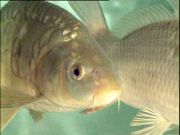|
 PHEREMONES & THE ENVIRONMENT PHEREMONES & THE ENVIRONMENT |
|
|
 |
Pheromones act as chemical signals and a method of communication between fish in an environment where vision is often restricted. Pheromones play a pivotal role in the biology of fish and are involved in reproduction, shoaling, feeding and migration. The pheromones are released by the fish in minute quantities and are detected by other fish using the sense of smell.
Most world-wide fish stocks are overexploited and it is unsustainable to base aquaculture on increasingly limited and expensive fish protein. In addition, intensive aquaculture leads to much waste and harmful impacts on the aquatic environment. |
|
|
|
 PHEREMONES EFFECT PHEREMONES EFFECT |
|
|
| Research has demonstrated that the world-wide demand for seafood and fish products is increasing. FAO projections show that there will be demand for a further 90 mmt per annum of edible seafood by 2040, a magnitude of change which would require a doubling of the current world's seafood supply of edible fish and shellfish. Statistics indicate that 25% of wild fish stocks are overharvested and another 30% to 40% are fully exploited. To protect the water resources and ensure sustainable fish stocks, many governments have implemented quotas and restrictions on commercial fishing. |
 |
|
With worldwide ocean fishing believed to be at the upper limit of sustainable capacity, additional demand can only be satisfied through increased aquaculture. It is estimated that world aquacultural production of fish and shellfish would need to triple by 2040 to satisfy this additional demand. However, at the present time the main proteins used within the aquaculture industries are derived from wild fish populations.
The development of the pheromone-based technology has two principal objectives:
|
 |
Firstly, in the short-term the application of pheromone formulations will attempt to increase the feeding activity of farmed fish and therefore the uptake of existing fish-based feeds within the aquaculture industry with the aim of reducing the amount of waste from uneaten feed, which results in significant environmental damage.
|
 |
Secondly, in the longer term the pheromone-based technology will aim to permit the use of more sustainable forms of proteins within feeds, which are not based on fish oils or proteins which it is intended to protect wild fish populations from further depreciation to satisfy the increased demands expected from the aquaculture sector. |
|
|
|
 RESIDUAL EFFECT? RESIDUAL EFFECT? |
|
|
| Moreover, the pheromone formulation is also environmentally friendly, with the pheromones breaking down after twelve hours, therefore there is no fear of any residual effects on the environment. |
|
| All images and data remain the property of CEFAS |
|